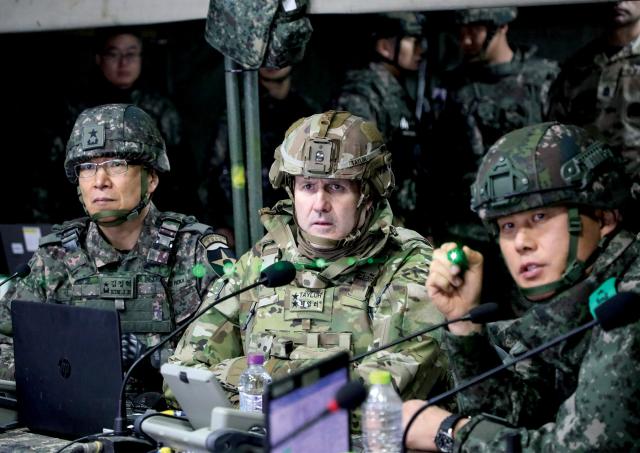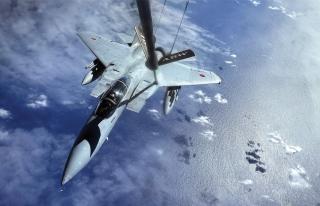Napoleon Bonaparte famously said, “If I must make war, I prefer it to be against a coalition.” He frequently exploited the challenges inherent in coordination among multiple states’ forces to win battles a quantitative comparison of forces and means suggests he should have lost. And yet, ultimately, a coalition defeated him in 1815.1
Multinational warfighting, whether by a coalition or an alliance, inevitably faces many difficulties.2 At the operational level, these include different standard procedures, doctrines, concepts, rules of engagement, and communication systems, among many others. This presents obstacles to interoperability, increases friction, and builds uncertainty among partners. A savvy enemy can exploit these gaps to defeat a combined enemy piecemeal. The challenges exist throughout a combined campaign, but they are most acute early in a conflict, especially when combined command structures are being established in the face of military pressure.
Maritime theaters further complicate coalition warfighting. Attempting to command and control combined forces scattered across vast swaths of ocean only exacerbates the difficulties. The failure of the American-British-Dutch-Australian Command (ABDACom) is a case in point. Commanded by General Sir Archibald Wavell, it was the supreme command for Allied forces in Southeast Asia in 1942. Charged to control the Malay Barrier, a notional line running from the Malay Peninsula down through the Dutch East Indies, it endured defeat after defeat and collapsed after a few short miserable weeks in the face of a series of decisive, coordinated thrusts by Imperial Japanese forces.3
In the western Pacific today, the challenges of securing the first island chain are quite similar to those associated with securing the Malay Barrier. In concert with its allies and partners, the United States seeks to hold the conceptual line running from Japan, through Taiwan, down to the Philippines to contain a militarily aggressive China and prevent it from isolating and conquering Taiwan. Strengthening this chain in competition enables deterrence; holding this chain in wartime would enable victory.4
A combined command structure in the first island chain would appear to be a straightforward means by which to pursue the ends of U.S. naval strategy there. The historical case is sound, and
the legal, diplomatic, and strategic hurdles—while substantial—are not insurmountable.5 Operationally and tactically, a progressive approach developed now through tabletop exercises, wargames, and field exercises, incorporating first bilateral then multilateral combined commands, would build the proficiency and shared command culture required to rapidly enable a combined command should conflict arise.
A Modern-Day Combined Command
The most immediate obstacles to developing a combined command structure—or even rehearsing it—are legal and cultural. However close, one ally can be hesitant to place its forces under the operational control of another, even when facing an existential threat.6
Yet such subordination does occur. The Combined Forces Command (CFC) in the Republic of Korea offers a modern example. The CFC’s task is to deter aggression and defend Korea to maintain stability in Northeast Asia.7 The CFC commander is a four-star U.S. Army general, who has operational control of a combined organization of 600,000 U.S. and Korean forces. The deputy commander is a four-star South Korean Army general. Both U.S. and Korean commanders lead the functional components that are subordinate to CFC. Plans to transition the role of CFC commander to the Korean military have been discussed but have not come to pass.8
Still, during Ulchi Freedom Shield 2023, the CFC’s Korean deputy commander assumed the role of overall commander.9 This was unprecedented, and while some U.S. subordinate commanders might have found themselves and their forces in uncharted territory, it offered invaluable lessons in combined command and control and allowed the senior commanders of both nations to increase confidence in the transfer of operational control across nations.
The CFC is a decades-old, fully operational, combined warfighting organization. Its remit is founded in both U.S. and Korean law, and it regularly exercises during today’s competition phase. A stable and mature combined construct, it has elements that could serve as a model for new combined command organizations.
Legal Hurdles
Many legal hurdles would need to be overcome to stand up commands like the CFC in the first island chain.
Consider Japan. The first hindrance to a combined U.S.-Japanese command is a matter of constitutional interpretation. Japan’s constitution prevents the “integration [with another state] in the use of force.”10 Japan’s Cabinet Legislation Bureau (CLB) provides the government with constitutional interpretations similar to those the U.S. Attorney General provides the U.S. executive branch regarding what is and is not legal.
The CLB has interpreted this as prohibiting combined command structures. But no Japanese law explicitly prohibits combined command structures, nor is notional experimentation with them expressly forbidden.
The CLB’s views on military matters have evolved, most notably in 2014 when it permitted conditions for the exercise of collective self-defense with the United States.11 Even if the CLB were to revise its interpretation to allow for a combined command, a formal policy change appears unlikely. Some Japanese legal scholars insist collective self-defense would be unconstitutional and would be struck down if tested in court.12
Another major challenge to combined command is divergent national interests. For example, Article VI of the U.S.-Japan mutual security treaty provides the United States with access, basing, and overflight rights for the purposes of defending Japan and maintaining “security in the Far East.”13 Yet these rights are constrained by Status of Forces Agreement processes that are subject to Japan’s national and local politics. Further, there is no bilateral definition of the “Far East” nor what would constitute a threat to its security.
In a combined structure, the Japan Self-Defense Force (JSDF) would collaborate closely with U.S. forces for the defense of Japan. But what if U.S. forces operated from Japan for the defense of Taiwan? Were the Japanese government to draw a collective self-defense distinction between the two, the constraints placed on a combined command carrying out or even supporting operations around Taiwan might create more command-and-control challenges than they resolve. Many more potential legal complexities exist, as well.
In any case, establishing an official combined command in the absence of an existential military threat is unlikely. Similar obstacles with varying degrees of severity also would create resistance to standing up bilateral combined commands between the United States and the Philippines or Australia, and even more so when seeking a multilateral combined command that could potentially include the United States, Korea, Japan, the Philippines, and Australia. But waiting for changes to such obstacles before preparing is not desirable, either. As former U.S. Pacific Fleet Commander Admiral Scott Swift puts it: “Too often allies are not assumed to be part of the command structure. Decisions about command constructs are often deferred—to be determined as the conflict develops. This is dangerous.”14
Experimentation
Legal obstacles to standing up bilateral CFC-like organizations likely do not prohibit informal experimentation. Command integration in wargames and exercises could explore possibilities regarding the use of force without establishing actual combined frameworks. Should legal conditions eventually change, the warfighting organizations would have playbooks ready to go and command cultures already familiar with them.
Exploring a combined U.S.-Japan command could follow a simple progression from tabletop discussions to wargames to exercises. The command would exist notionally and only during experimental events. In some scenarios, a U.S. flag officer would serve as the combined force commander, with a JSDF deputy, while in others, the roles might be reversed.15 Lessons from these events would inform how commands refine their approaches to developing interoperability in command and control, staffing, fires, sustainment, communications, and other critical elements. While formal creation of a combined organization probably would not occur without the catalyst of war, operational planners could draw from these experiments to develop contingency plans for integration.
If Japanese policy and political obstacles hinder military-to-military concept development, think tanks and other third parties could explore options that might eventually move the needle with Japanese officials. The Atlantic Council has facilitated the Tiger Guardian wargames, an unclassified series of high-operational- to strategic-level games that examine contingencies involving China and North Korea. They examine issues of prioritization in simultaneous contingencies that have until recently been taboo for Japanese and South Korean officials to discuss too overtly.16 Similarly, the Center for Strategic and International Studies unclassified wargame exploring a Taiwan contingency led to the publication of a report that encourages open-source discussion on topics that remain politically sensitive.17 All can inform combined command development.
While there may be political and bureaucratic sensitivities, there appear to be few if any legal obstacles to experimenting with such concepts in wargames and exercises, permitting commanders to start working through the associated operational difficulties immediately.
The outlined approach for Japan also would apply to developing bilateral combined command structures with other allies and partners in the first island chain. The crawl-walk-run approach of tabletop discussions, wargames, and exercises can be applied to experiments with bilateral combined commands between the United States and the Philippines, Australia, and others. Multilateral combined command structures also could be developed. In experimentation, nations could take turns wearing the hat of the combined force commander or deputy commander at different events.
Get It Right Before It Matters
Bilateral and multilateral experiments would help identify where national objectives and priorities coincide and diverge by highlighting risks and decision points, building greater trust and cohesion, and enabling conditions for an eventual standing combined command optimized to strengthen the first island chain and ensure regional stability.
Reflecting on the disaster that was ABDACom, General Dwight D. Eisenhower wrote: “In a desperate attempt to save the Netherlands Indies and Singapore, General Sir Archibald P. Wavell, in late December 1941, was sent . . . to become the first Allied commander in chief . . . in the hope that out of unified effort might spring a miracle. Wavell never had a chance.”18
Still, Eisenhower continued, the effort between combined leaders trying to stand up such a combined organization bore fruit: “For the first time we had the concrete task of writing a charter for a supreme commander. . . . We found it necessary to go painstakingly into rights of appeal and scope of authority in operations and service organizations. . . . We had not yet come to appreciate fully the nature of an allied command.”
Without action now, a postwar history might also make the same remark about an inevitably doomed command stood up in the first island chain without preparation, hoping for a miracle when the seeds for success were never planted.
While the laws of U.S. allies put a hold on formally standing up new combined commands, the path forward will be to go through the same kinds of efforts Eisenhower found so valuable. A path of experimentation building on tabletop discussions, wargames, and exercises—first with bilateral and eventually multilateral combined commands—would build the international framework required to strengthen defense of the first island chain, deter Chinese aggression, and defeat China if conflict arrives.










